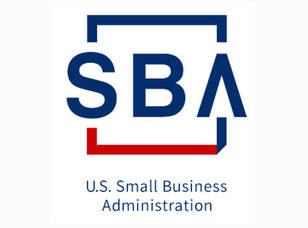New PPP Changes Allow More Small Businesses to Benefit from Program
The Biden-Harris administration made changes to key eligibility requirements to the Payroll Protection Program with the sole intent to include and benefit truly small businesses, especially those owned by people of color.
The PPP program was created in April 2020 to help small businesses stay open and continue to pay employees for up to 8 weeks by granting them a loan that could be fully forgiven if they used at least 60% of the funds received to cover their payroll expenses. Business owners could use the rest of the funds, 40%, to pay for utilities, rent and/or mortgage interest expenses. During the first round of PPP loans, it took 13 days for the program to run out of the $349 billion in funds that had been allocated to support small businesses. The formula utilized to determine the loan amount each business would receive was based on their monthly payroll, the larger the payroll, the greater the amount a company received. Besides very large companies, several publicly listed companies with deep cash reserves, as well as franchises applied for the program, making the funds go quickly and leaving no funds for the truly small businesses. It was because of this, that the SBA, under the direction of the new administration, made key changes to the program and put forth real effort to inform and educate small business owners about the program. The “Briefing Session with Hispanic Small Business Owners on New Changes to the PPP” during the first week of March included interpreting in Spanish via phone for attendees that chose receiving the information and asking questions in their primary language. It also included presenters by the US Hispanic Chamber of Commerce, several department heads from the Small Business Administration, and a representative from the White House Office of Public Engagement. Leroy Cavazos Reyna, vice president for the US Hispanic Chamber of Commerce, underlined the need to get necessary information and technical assistance to the 4.7 million Latino businesses represented by his organization. “It is only with these tools we will be able to lead the recovery and revitalize the economy from the pandemic,” he stressed. Latino-owned business was the fastest growing segment of small businesses. It accounted for 34% in the last ten years, but also 32% of them have closed in the last year because of the pandemic, compared to 17% of white-owned businesses. The SBA’s goal is to close access gaps for truly small businesses this time around and it established a two-week period where only small businesses, those with no more than 20 employees, loan applications were prioritized. After that period, small businesses can still apply, however, there will be more competition as the program will be open to all businesses that meet the new criteria. The new criteria will allow sole proprietors, independent contractors, self-employed, lawful US residents that possess an ITIN, people with student loan delinquency in their credit history, and ex-offenders who are not under parole or indictment, to apply. However, people who have filed for personal or business bankruptcy are disqualified. Here is a recap to their question-and-answer session: If I already received a PPP loan and the funds were not enough for my business, can I apply again? Yes, however, a new requirement for a second draw is that you must demonstrate you have had at least a 25% decline in revenue comparing any quarter in 2020 to a similar quarter in 2019. What is forgiveness and how can I apply? What are the terms? If you took a PPP first draw, you are eligible for forgiveness. We encourage you to apply as most loans are 100% forgivable. Of the 5.2 million loans made, one third has been 99.1% forgiven. Your lender should be able to help you complete your application and submit to SBA for forgiveness approval. If you have a CPA that prepares your taxes, they can help you with your application too. If I started my business in 2020 and do not have payroll history, am I eligible for a PPP loan? You may be, if your business started before Feb. 15, 2020. However, there are other criteria that will apply, for example seeking a first draw vs seeking a second one. Does the SBA make loans? Yes and no. The PPP loans are made through financial institutions only. The SBA has other loans available that are not forgivable, however, they have exceptionally low interest rates and friendly terms. You can apply for a PPP and EIDL (Economic Injury and Disaster Loan) and could be eligible to get both. In closing, attendees were encouraged to visit the SBA’s website, sba.gov/local-assistance, and spend time exploring it. It has local information, whether it is resources, partners, mentors, etc. There are 68 district offices throughout the U.S. and they all have a lender relations specialist who can help find a lender and navigate the application process. |
